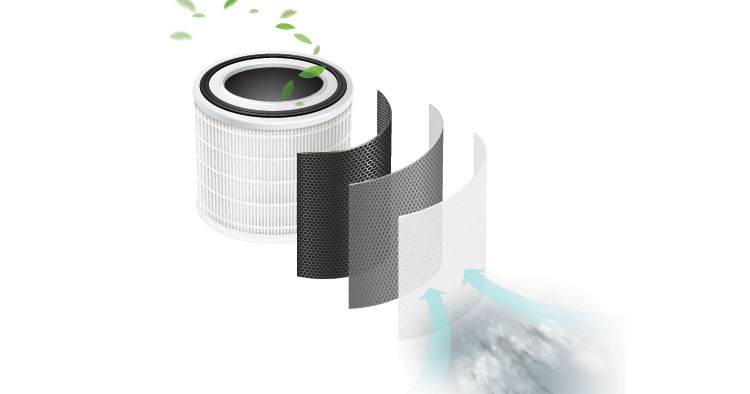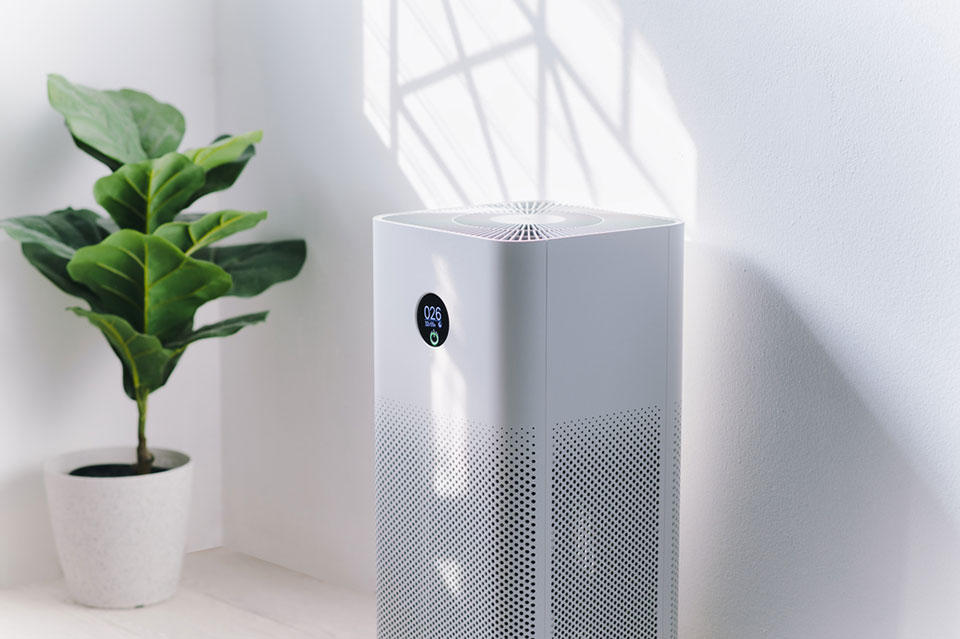How Smart Technologies Are Improving Indoor Air Quality

Poor indoor air quality is attributed to short-term health problems like dizziness, headaches, throat irritation, and eye irritation. But poor air quality can also cause long-term health issues like respiratory disorders, heart diseases, and cancer.
Offices and homes are a big concern, as most people spend more time in those two places. Kids and seniors are at a higher risk of suffering the effects of air pollution than the general population.
Therefore, homeowners or business managers should take measures to improve indoor air quality. 3.8 million people die annually around the world due to indoor air pollution. There are many smart technologies that are purpose-built to increase the air quality we breathe.
Smart AC systems
These systems use Wi-Fi technology and Internet to give users seamless control of their indoor air quality. The systems are mountable on walls or windows for efficiency and remotely operated via a mobile device such as a tablet, smart phone, or computer.
Some smart AC brands and models allow connection to smart home assistants like Alexa or Google Home. This enables the user to use voice controls to manage their air quality.
The air filters come in various sizes. Make sure you have the right size to avoid stressing the air-conditioning system unnecessarily. A stressed AC easily pumps dirty air back, causing air pollution problems.
Smart sensors
Smart sensors can help greatly improve indoor air quality. There are different smart sensors that you can purchase and install for efficient air pollution control. These sensors give alerts whenever airborne pollutant levels are high. This allows property managers and homeowners to act swiftly to prevent adverse health problems.
For instance, the carbon monoxide monitor is crucial because this poisonous gas is both odorless and colorless. This type of sensor can be installed in the kitchen where it can easily detect carbon monoxide in the premises or home.
The sensor sends an alert to your mobile device or sounds an alarm, alerting you to open the windows to allow fresh air inside to eliminate the poisonous gas.
Smart air purifiers
Air purifiers are responsible for filtering harmful air pollutants like pollen, viruses, pet dander, bacteria, and volatile organic compounds from the air. The operating principle of the typical air purifier involves sucking in dirty air, filtering that air by removing harmful particles, then delivering the clean air back into the space. Poor indoor air quality lowers workplace productivity and information-processing ability, so air purifiers can help improve workplace metrics and employee well-being by removing harmful pollutants from the air.
Traditional air purifiers are often sufficient for most spaces, but efficiency and operation standards can differ greatly among even similar products, which informs the need to get smart air purifiers. Smart air purifiers are easy to operate since they don’t need to be manually operated as with traditional air purifiers.
Many smart air purifier systems use sensors that constantly monitor airborne particles and provide data about their concentrations. In many configurations, this information is sent straight to your mobile device in real-time for action. Smart air cleaning technology also tends to have automatic filtration capabilities, often in combination with smart home or building management technology, that allow automatic adjustment to keep the property free from air contaminants.
Smart dehumidifiers
Most heating ventilation systems and AC thermostats only control air temperatures but not the humidity in the air. This can create a perfect breeding ground for mold. Therefore, having a smart technology in place that monitors humidity like a smart dehumidifier helps you control both the humidity and temperature.
Smart dehumidifiers are easy to manage and provide accurate real-time data streamed to your mobile device. The dehumidifier works seamlessly when conditions are off to restore ideal indoor air quality and conditions. Installing this smart technology solves your temperature and humidity problems preventing health problems like asthma, itchy skin, and sore throat, among others.
Extreme humidity has adverse health effects. Smart dehumidifiers regulate humidity in the office, home, or property. They are also easy to maintain and manage, making them invaluable in the modern age.
Ways Of Maintaining Excellent Air Quality
- Adequate ventilation
Ventilation plays a significant role in air quality. The United States Environmental Protection Agency (EPA) defines ventilation as the simultaneous supply and elimination of air from a building. Installing an efficient ventilation system ensures that outside air is conditioned well before mixing with indoor air. The mixture is what gets distributed throughout the building. If there is a problem or the system is under-performing, you get poor air quality. Schedule regular cleaning of the ventilation system by professionals to guarantee optimal functioning. Make repairs and replacement of broken parts to ensure the air distribution is efficient. - Control contaminants
Most contaminants affecting indoor air quality are indoors, but others come from outside. The most common pollutants are volatile organic compounds (VOCs). These compounds are released as gases from processes or products. Sources of VOCs include cleaning agents, surfaces, coatings, air fresheners, disinfectants, etc. Other sources include polluted underground water and formaldehyde gas from a new carpet.Carbon monoxide from furnaces, boilers, generators, and automobile exhaust cause chest pains, fatigue, and impaired vision and can also be fatal. Particulate matter contaminants are also a huge concern when inhaled, as they affects the heart and lungs. They can be generated from construction works or burning fossil fuel emissions coming in through HVAC systems. Indoors, particulate matter often arises from cigarette smoking, fireplaces, etc.
Take measures to reduce risks posed by the contaminants to avoid overworking your smart systems. For instance, do not allow cigarette smoking in public areas. Ensure that the parking lot has adequate ventilation to prevent carbon monoxide from coming inside the building. Lastly, use a professional service to install your smart technologies to ensure the spaces are evenly covered for efficient indoor air quality control.
Maintaining optimal indoor air quality should always be a priority for any homeowner or business. Smart technologies play a vital role in keeping the space contaminant-free. As a result, you have a more comfortable indoor space while protecting your workers and family from health problems.
The objective of using smart technologies is to improve comfort, health, and the highest standard of satisfaction for the indoor environment. This is a human-centric solution to poor air quality problems. The technology monitors critical environmental indexes and acts swiftly to mitigate possible dangers. Contact experts today for more information.
If you want to learn more about how to become a Clean Air Facility with air cleaning technology, we invite you to visit IQAir.com.
Add CEOWORLD magazine to your Google News feed.
Follow CEOWORLD magazine headlines on: Google News, LinkedIn, Twitter, and Facebook.
This report/news/ranking/statistics has been prepared only for general guidance on matters of interest and does not constitute professional advice. You should not act upon the information contained in this publication without obtaining specific professional advice. No representation or warranty (express or implied) is given as to the accuracy or completeness of the information contained in this publication, and, to the extent permitted by law, CEOWORLD magazine does not accept or assume any liability, responsibility or duty of care for any consequences of you or anyone else acting, or refraining to act, in reliance on the information contained in this publication or for any decision based on it.
Copyright 2024 The CEOWORLD magazine. All rights reserved. This material (and any extract from it) must not be copied, redistributed or placed on any website, without CEOWORLD magazine' prior written consent. For media queries, please contact: info@ceoworld.biz
SUBSCRIBE NEWSLETTER










